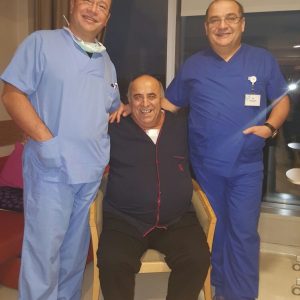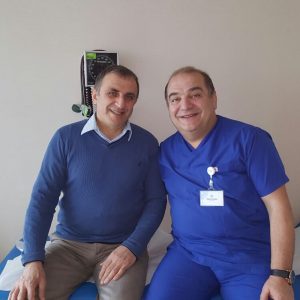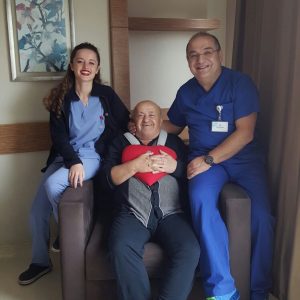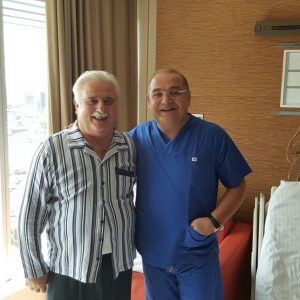
Your heart is safer with bypass on a beating heart
Bypass operation in a beating heart first started with one vein. Progress was made over time, and the area of this operation was expanded to cover all vessels leading to the heart. Currently, this method is the most preferred bypass technique provided that it is done by experts.
Coronary bypass in a beating heart was born out of necessity. In particular, performing open heart surgery by stopping the heart in a patient with problems in organs such as lungs and kidneys can worsen the condition of these organs.
Coronary bypass surgery in a beating heart is a method of heart surgery performed on the heart without stopping the heart and connecting to a cardiopulmonary pump.
The surgeon uses special stabilizing devices to reduce the movements only in the heart area that he will be working on during surgery. Meanwhile, the heart continues to pump blood both to the body and itself, creating the blood pressure necessary to maintain life. This way, the possible risks of open heart surgeries in which the heart-lung pump is used and the heart is temporarily stopped and disabled are minimized.
The heart is stopped in open heart surgery
During classical open heart surgery, the connection of the heart with the systemic circulation is temporarily stopped by placing a cross-clamp in the aorta. During the removal of the clamp at the end of the operation, it is known to cause many microcalcification, fat, plaque embolisms. Cross-clamps are not used in coronary bypass operations in the working heart, thus the risk of microembolism is minimized.
In classical open heart surgery, the heart is stopped with a liquid called cardioplegia after a cross-clamp is placed in the aorta. During this time, the blood flow to the heart muscle is interrupted, the nourishment of the heart is provided by the oxygenated blood cardioplegia administered during the operation. Although it is an extremely effective and modern technique to protect the heart during the operation with oxygenated blood cardiopygia, the best protection method of the heart during the operation is to perform the operation in a beating heart and to ensure the continuation of normal physiological heart nutrition. In coronary bypass operations in a beating heart, the best most perfect physiological heart protection is ensured during the operation with the use of intracoronary conditions that allow blood flow to continue in the coronary heart vessel, since the cross-clamp is not used and the heart continues to operate.
The advantages of not using a heart lung pump

Another common name for beating heart surgery is Off-pump coronary bypass surgery, which means that the pump is turned off. Coronary bypass operations in the beating heart are performed when the pump is turned off, the patient is not connected to the lung pump.
The heart-lung pump triggers some of the body’s defense mechanisms by affecting the blood circulation during surgery. These mechanisms, which are necessary for a normal person to live, can reach a level that can harm the person after heart surgery. It can cause lung failure and pulmonary edema. In patients connected to a heart-lung pump, blood pressure is lowered during the operation, which can cause nutritional deficiency in all organs, especially in the brain, kidney, liver and gastrointestinal tract.
Consciousness disorders, behavioral changes, kidney failure, elevation of liver enzymes, decrease in gastrointestinal motility, which can be observed after classical open heart surgeries, can occur as a result of this low blood pressure. These possible risks are minimized in coronary bypass surgeries in the beating heart.
Other operations can be performed with beating heart surgery.
Coronary bypass operations are most frequently performed with off-pump bypass surgery. However, tricuspid valve operations can be performed without stopping the heart, using the support of the heart-lung pump. In addition, in order to shorten the cross-clamp times in bypass procedures to be applied together with valve operations by using an intracoronary shunt after coronary bypass intervention and using the support of the heart-lung pump, the valve operation can be started by placing a cross-clamp without stopping the heart. These practices, which are made to shorten the cross-clamp times, can provide better protection for the heart during the operation.

Advantages of off-pump coronary bypass surgery
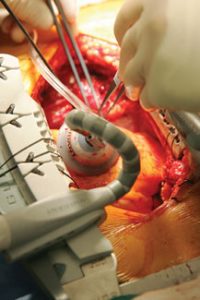 * Better protection of heart functions
* Better protection of heart functions
* Reduced mortality (especially in high risk patients)
* Shorter hospitalization
* Shorter intensive care and pulmonary apparatus use
* Faster recovery time, less post-operative complaints such as fatigue, loss of appetite
* Less likelihood of lung failure, kidney failure requiring dialysis, and liver failure
*Decreased risk of brain damage, manifested in the form of nervous-cognitive disorders, behavioral disorders, decrease in mental functions or paralysis in the most severe form
* Reduced or no need for blood transfusion
* Less frequent infections in chest incisions
* Better protection of heart functions
Which patients benefit more?
* Patients with severely reduced cardiac contractile functions, who cannot tolerate the heart-lung pump,
* Patients with severe or moderate plaque-caIcific ascending aorta,
* Patients with plaque, calcification and narrowing in the carotid arteries feeding the brain; Patients with previous strokes or mini-strokes (transient ischemic attack),
* Patients with severe renal insufficiency,
* Patients with chronic lung disease.
* Patients with ongoing cancer treatment or who have undergone such treatment in addition to coronary artery disease.
* The off-pump coronary bypass surgery technique is more useful in patients aged 70 and over. Box
The chosen method should not have a neurological effect on the patient.
Patients and their relatives suggest that a change incurs in the behavior of patients who have had heart-lung pump surgery later. It is concluded that the pump can have neurological effects on the patient.










